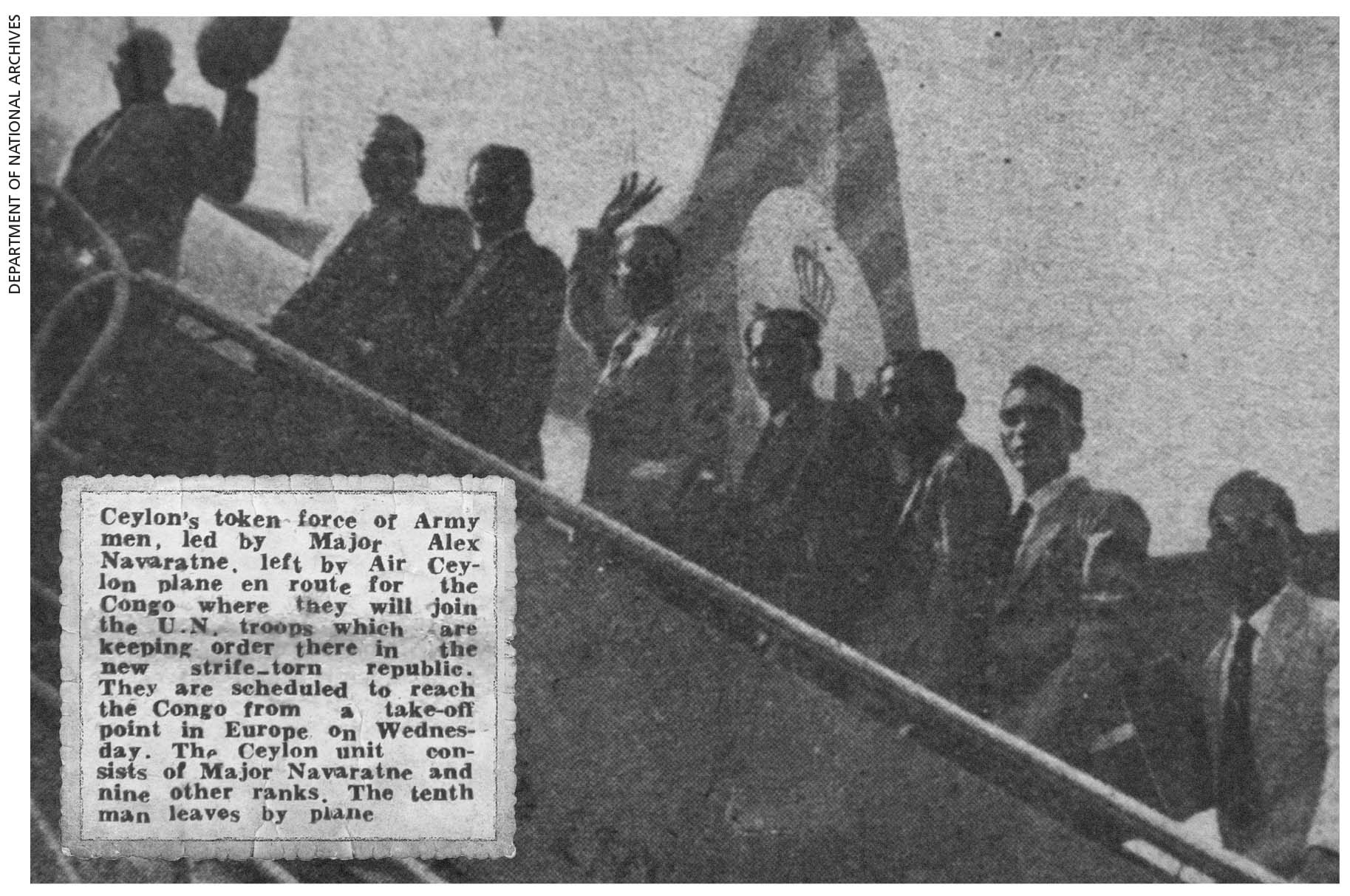1960
Ten of Ceylon’s Peacekeepers to the Fore
Signal honour for newly sovereign nation
The year 1960 proved to be an eventful one for Ceylon at the UN.
First, it was admitted to the prestigious circle of member states that comprised the United Nations Security Council. Then in May of the same year, Ceylonese diplomat Sir Claude Corea was elected to its rotating presidency.
And finally, the newly independent island nation contributed cadre to the UN’s peacekeeping forces in the Democratic Republic of Congo (DRC).
This came about after the then UN Secretary-General Dag Hammarskjöld sought the assistance of the newly independent island nation in negotiating a ceasefire agreement in the troubled African state.
And the Ceylonese career diplomat whose good offices and negotiating acumen that the United Nations chief sought was none other than (later Deshamanya) Neville Kanakaratna. It was a singular honour for both Ceylon as a country and Kanakaratna as an ambassador.
In fact, it placed the island nation – a small state that had only a short 12 years before broken the shackles of slavery to empire – to stand tall among sovereign entities on the shoulders of giants.
As even a non-permanent member of the powerful Security Council, Ceylon’s contribution to global affairs cut a swath through the tangled international skeins at the time… 10 soldiers provided stalwart services in the DRC – an exceptional contribution from such a small country.
Of course, Sri Lanka’s protracted civil war wherein the island’s native security forces fought off a vicious separatist movement in the most violent of terms cast a long shadow over the country’s contribution to UN peacekeeping missions around the planet.
It was not to deter the Indian Ocean state however, which set up the Institute of Peace Keeping Operations in 2004 – an institute dedicated to training peacekeeping forces.
This sparked a fresh interest in the country’s capacity to supply cadre for the task and saw a battalion of 950 troops despatched to Haiti for the purpose – a hundred of whom were returned in disgrace following alleged human rights violations that marred Sri Lanka’s image.
It placed the island nation – a small state that had only a short 12 years before broken the shackles of slavery to empire – to stand tall among sovereign entities on the shoulders of giants





